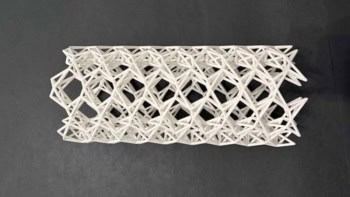Researchers in Japan have made a nanothermometer by filling a carbon nanotube with liquid gallium. The new device works in air, unlike previous models, which only operated in vacuum. The thermometer, which is less than 150 nanometres in diameter, could find use in a range of micro-environmental applications (Y Gao et al. 2003 Appl. Phys. Lett. 83 2913).
Last year Yihau Gao and Yoshio Bando at the National Institute for Materials Science in Tsukuba found that the height of a column of liquid gallium in a nanotube – a sheet of graphite rolled into a cylinder – varies linearly with temperature. This is analogous to the behaviour of mercury in a conventional thermometer, albeit on a scale that is a billion times smaller. Researchers therefore ‘read’ the temperature with an electron microscope.
This nanothermometer, which consisted of a nanotube closed at both ends, could record temperatures between 323 and 823 kelvin. In contrast, existing nanoscale devices are only able to operate between 4 and 80 kelvin. However, the original device had only been demonstrated inside the high vacuum conditions of an electron microscope.
Now the same team has shown that if the nanotube is left open at one of its ends, the thermometer can operate in air. At high temperatures, the liquid gallium forms a thin oxide layer that sticks to the inner walls of the nanotube near the open end. The position at which the layer forms corresponds to the height of the gallium meniscus just before it oxidized. This oxide layer remains in place even after the thermometer has cooled down.
The researchers tested the device by placing it in a furnace and comparing the temperature it recorded with that measured by a thermocouple. They found that the two measurements agreed with each other to within 5 to 10%. Gao and co-workers say that the device is still in an early stage of development. However, it already shows promise for use in micro- and nanoscale environments where it would be impossible to use a conventional thermometer.



